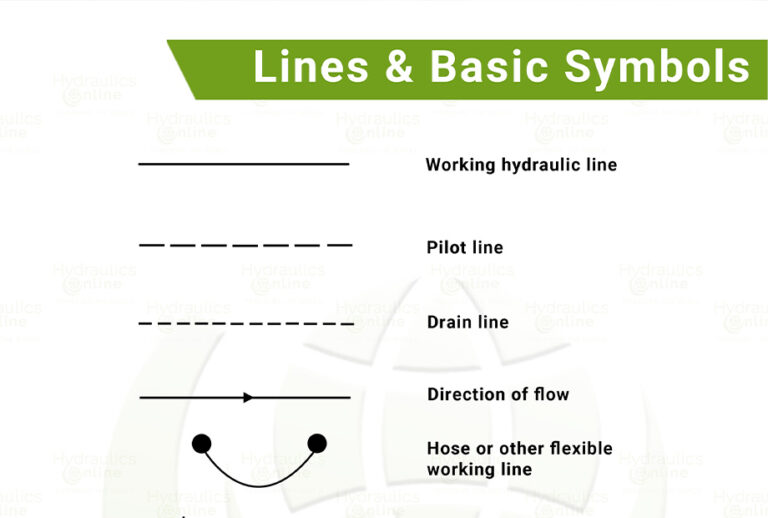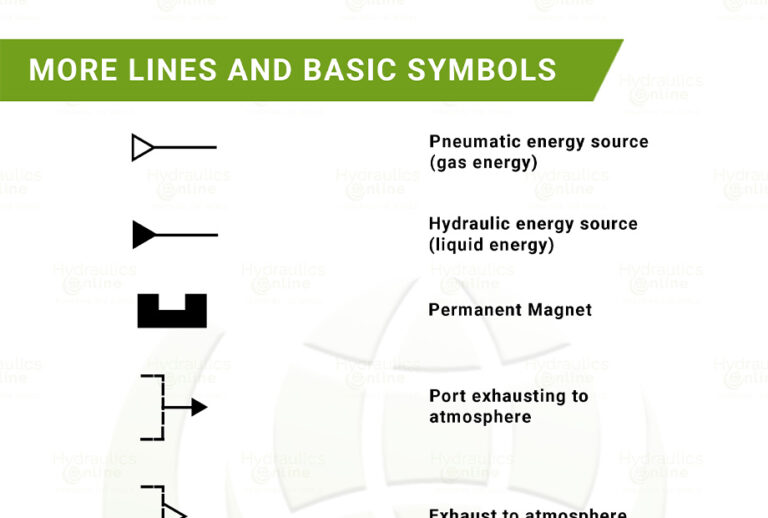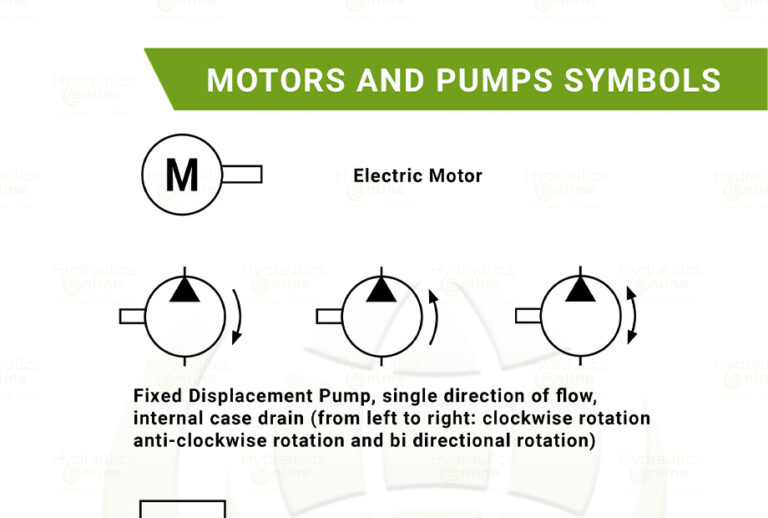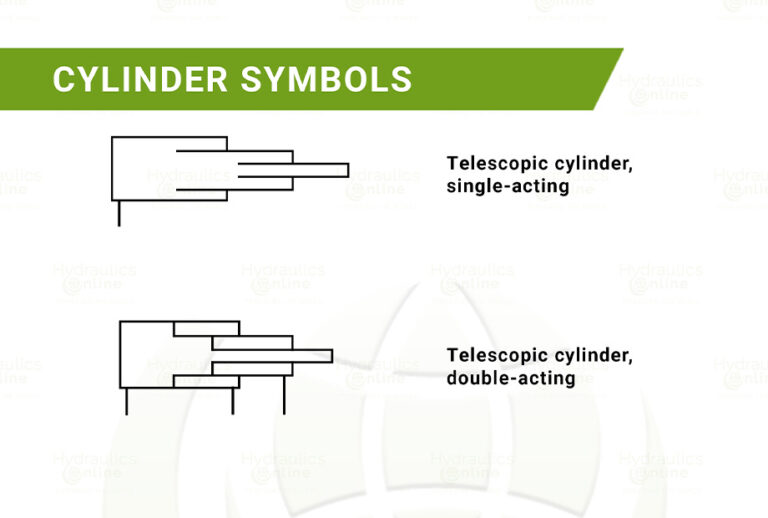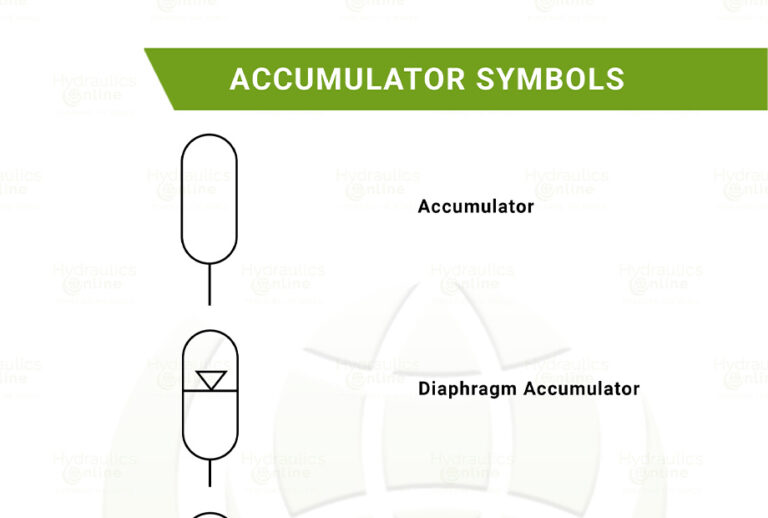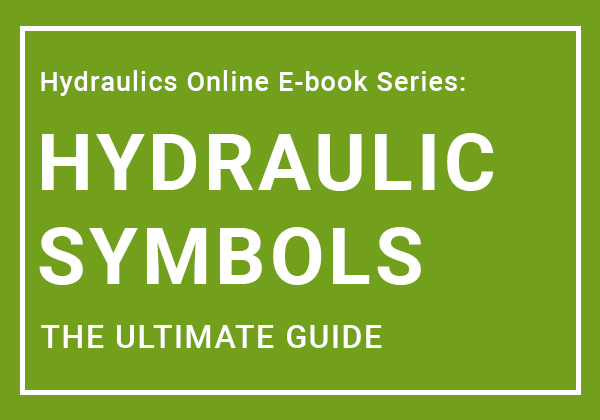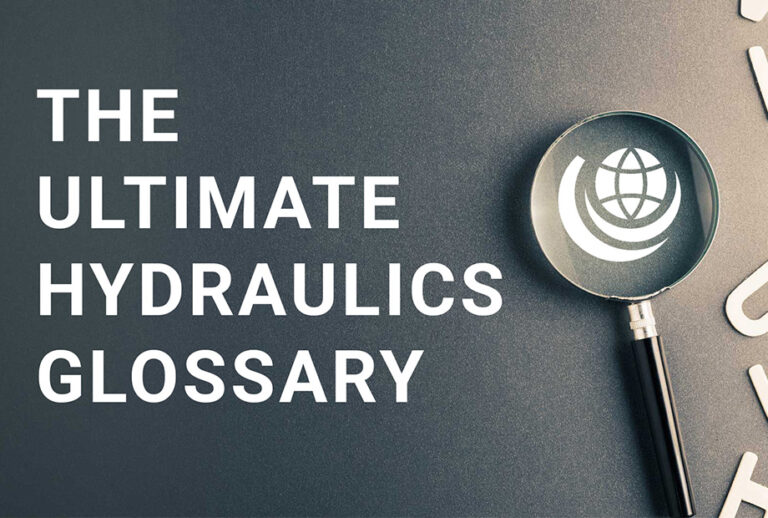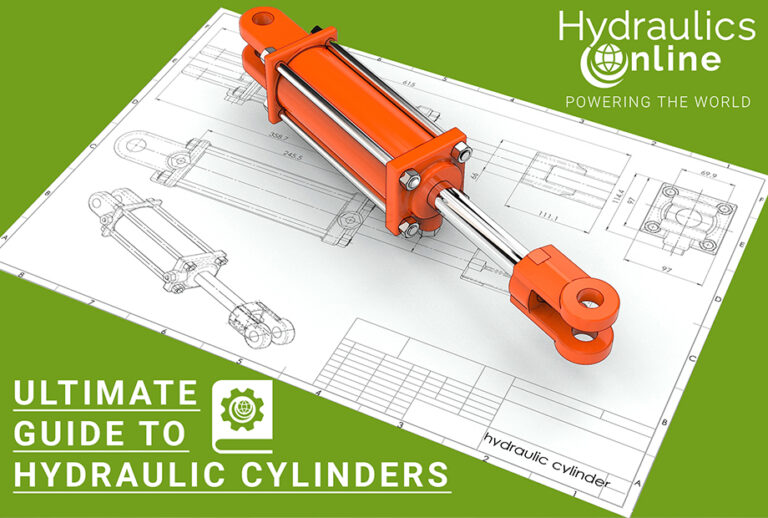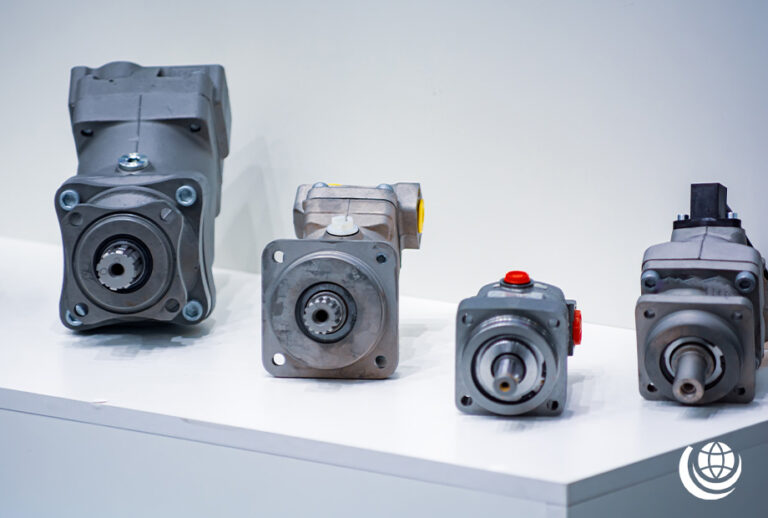Hydraulic circuits can include cylinders, motors, valves, pumps, and other components, all interconnected through hydraulic pipes and tubes. Due to their intricate design, a standardised set of hydraulic symbols was developed to visually represent fluid power systems in schematic drawings.
Hydraulic schematics may appear complex at first, but they follow a structured visual language—one designed to simplify system interpretation with clear, standardised symbols.
The International Standards Organization ISO 1219-1:2012 standard provides a universal set of hydraulic symbols, offering critical insights into system configurations and flow paths without specifying component size or exact positioning. Below, we’ve summarised some of the most widely used symbols in fluid power schematics.
Need expert guidance? Our award-winning technical sales engineers are here to help – get in touch today!
Hydraulic Symbols
Discover Hydraulic Lines and Essential Symbols
Hydraulic lines form the backbone of fluid power systems, directing flow and ensuring seamless operation. Each type serves a distinct function, from pressure lines to return lines, and is represented by standardised symbols in circuit diagrams.
In this guide, we break down the different hydraulic line types, their roles, and the symbols used to depict them—helping you interpret schematics with accuracy and confidence.
Download EbookLearn about other Essential Hydraulic Symbols
Hydraulic schematics feature a range of symbols beyond pumps and cylinders—each representing critical components that influence system performance. From magnets and springs to switches, coolers, and temperature gauges, these symbols provide valuable insights into fluid power operation.
In this chapter, we break down the most frequently used symbols, helping you interpret circuit diagrams with accuracy and confidence.
Download EBook
Hydraulic Motor and Pump Symbols
Hydraulic pumps generate a steady flow of fluid, delivering power with precision and efficiency. Hydraulic motors, in contrast, convert hydraulic pressure into rotational force, driving mechanical movement across various applications.
These critical components ensure control, reliability, and performance in fluid power systems. Below, you’ll find key symbols used to represent pumps and motors in hydraulic schematics, helping you interpret circuit diagrams with accuracy.
Download EBookLearn About Hydraulic Cylinder Symbols
Hydraulic cylinders are the driving force behind many fluid power applications, delivering controlled movement and force with precision. Often likened to the muscles of hydraulic systems, these components play a vital role in powering articulated machinery across industries.
To ensure consistency in schematic interpretation, a standardised set of hydraulic cylinder symbols has been developed. Below, we explore those most widely used, helping engineers and technicians decode hydraulic schematics with confidence.
Download EBookDiscover Hydraulic Accumulator Symbols
Accumulators are essential components in hydraulic systems, storing pressurised fluid to provide additional power when needed. They help stabilise system pressure, absorb fluctuations, and improve operational efficiency.
Different types of accumulators – such as bladder, piston, and diaphragm accumulators – are represented by distinct symbols in hydraulic schematics. Below, we explore these symbols, ensuring accurate interpretation for system design and troubleshooting.
Download EBookExplore Hydraulic Valve Symbols
Valves are fundamental to regulating fluid flow in hydraulic systems, controlling direction, pressure, and flow rate with precision. While their operation may seem simple, the wide range of valve types requires a clear understanding of their symbols for accurate schematic interpretation.
In this section, we break down nearly 60 hydraulic valve symbols, helping you confidently identify their role in fluid power applications.
Download EBookWe’re trusted by customers in 130 countries worldwide… how can we help?
Learn more from our Fluid Power Technical Knowledge Hub…
Hydraulic Symbols E-Book
Looking for a single, comprehensive resource for fluid power schematics? Our Hydraulic Symbols eBook brings together over 140 essential symbols, covering everything from basic lines and components to pumps, motors, cylinders, accumulators, and valves.
Download the PDF guide today and simplify hydraulic system interpretation with a clear, structured reference at your fingertips.
Download EbookHydraulic Calculations
Precision matters in hydraulic system design, and getting the numbers right is crucial for efficiency and performance. Our experienced technical engineers are here to assist with the detailed calculations tailored to your specific project and application.
To get you started, we’ve compiled a quick reference guide covering essential formulas and key hydraulic parameters—helping you streamline design, troubleshooting, and optimisation.
Learn moreNeed more help? Explore our Hydraulics Glossary
Hydraulic systems come with a vast technical vocabulary, and understanding key terms is essential for accurate system design and troubleshooting. Our Hydraulics Glossary covers nearly 500 essential terms, from Abrasion to Working Pressure, ensuring you have the knowledge you need at your fingertips.
Whether you’re an industry expert or just starting out, we simplify complex terminology, helping you navigate fluid power with confidence.
Learn moreThe Ultimate Guide to Hydraulic Cylinders
A hydraulic cylinder is the actuator – or “motor” – side of a hydraulic system, converting fluid power into controlled linear motion.
Often described as the “muscles” of hydraulic machinery, these components make light work of lifting, lowering, moving, and locking heavy loads with precision and efficiency.
Learn MoreThe Ultimate Guide to Hydraulic Motors
All hydraulic motors convert fluid flow and pressure into rotary motion, but their designs vary to suit different applications. Choosing the right motor depends on factors like speed, torque, efficiency, and system compatibility.
This guide breaks down motor types, their unique characteristics, and key considerations for selecting the best option for your needs.
Learn moreSpecifying Hydraulic Hoses
Hydraulic hoses are critical components, not mere accessories. Their specification and installation require careful attention, as a hose burst failure can be catastrophic.
Choosing the right hose involves evaluating pressure ratings, material compatibility, temperature resistance, and routing requirements—ensuring system integrity and safety.
Learn More


